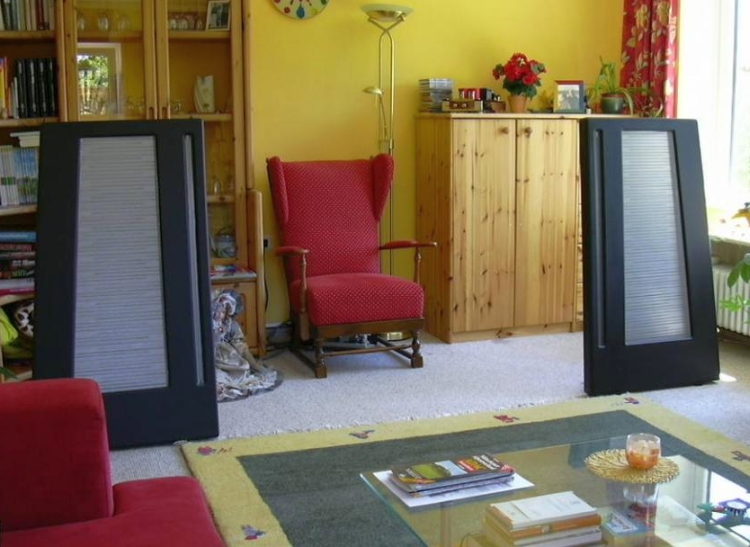
Detailed Info about the Apogee Caliper Signature
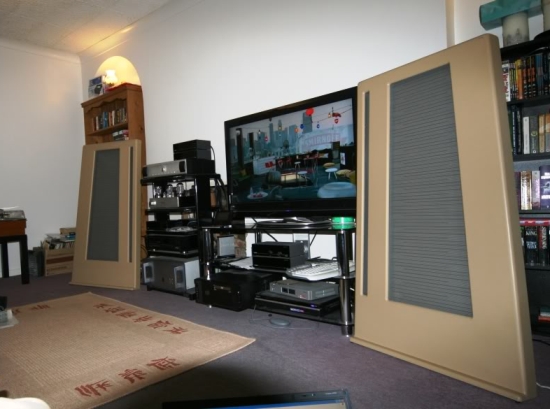
Generic Info
The original Caliper was entirely redesigned for the Signature model. Drive unit and crossover were changed and only the frame was unchanged. The result is a speaker with an easier load than the original model that has more controlled bass and a better overall balance.
The original Caliper could be upgraded to the Signature specifications.
As the cheapie in the range, the Caliper was designed to work happily with a broader cross-section of amplifiers. It was also smaller than its stablemates, which made it more suitable for smaller rooms. But everything is relative. The original Caliper was still very hard to drive and incredibly inefficient. It never seemed to be happy with anything less than a Musical Fidelity A370 or a Krell KSA-80 (or the KSA-100 from the old range – the 50 watt Krell wasn’t quite up to it) providing the muscle.
The Signatures are much more sensitive and also sound much livelier and smoother. The top end is sweeter and has a little more presence than before, while the midband doesn’t quite throw itself in your lap in the way it could previously. They sound, not more distant exactly, but more relaxed and natural, yet without a hint of a loss of grip or resolution. Just the opposite. Bass reproduction is a constant surprise. It doesn’t go quite as deep as a Tannoy DC3000, but it has the measure of most others. Above all it has tremendous resolving power.
From Caliper to Caliper Signature
The development programme that produced the Signature was explained by Leo Spiegel, the designer of Apogee loudspeakers: ‘First I improved the electronic shaping circuit,’ he explained. ‘The near field response is very subtly shaped. A response ‘hinge’ is created around 1kHz, with output then dropping to about – 2.5dB by 5 or 6kHz. Output then rises again until it reaches nominal, which is maintained between 12 and 20kHz. This means output is slightly depressed in a region centred on 5 to 6kHz, but the acoustic far field response is very smooth and group delay is very low.’
‘Another point that received attention was the acoustic baffling around the mid/ tweeter ribbon. Everything around the ribbon affects the way it sounds. I worked and reworked it to achieve a smoother and cleaner response in the midrange. I got where I wanted to go by fitting wood blocks of different dimensions on the back of the midrange/tweeter ribbons.’
‘I also redesigned the bass ribbon. Impedance has been lowered from a little over 4ohms to about 3ohms, and the ribbon has been made slightly heavier, which is practical because the mass of the air load is so high in relation to the mass of the diaphragm that increasing it has a trivial effect. In combination these measures have led to an improvement in sensitivity of no less than 4dB.
Apogee were ambivalent about the actual sensitivity figures, claiming difficulties in making the measurement. But it seems that the anechoic figure is slightly under 80dB for 1 watt at 1 metre, while the in-room figure is typically 86 or 87dB. That is still a low figure, but there’s no questioning the Signature’s increased sensitivity.’
Specifications
1989-1992
Original Retail $3295
Height 121 cm
Width 61 cm
Impedance 3 ohms
Bass driver
Aluminium/Kapton panel
Midrange/Tweeter
Aluminium/Kapton (3 segment)
Max Sound Level
103dB
Sensitivity @ 3m
84dB
Frequency response
40Hz (-3dB) to 20kHz
Crossover frequency (acoustic)
1kHz
Suggested amp power
100W (into 8 ohms) 200W (into 4 ohms)
Weight 32kg each
Finishes available
Light grey, Anthracite, or Taupe

DAX (optional)
A DAX is a two channel Dedicated Active Crossover designed specifically to be coupled with the Diva, Duetta Signature and Caliper Signature, or Mini Grand and Studio Grand speakers. A DAX provides exceptional tuning flexibility which enables users to sculpt a tonal balance to meet their listening requirements whilst skipping part of the passive crossover components. The DAX will accomodate a wide range of preamplifier and amplifier characteristics.
More DAX photos and detailed info
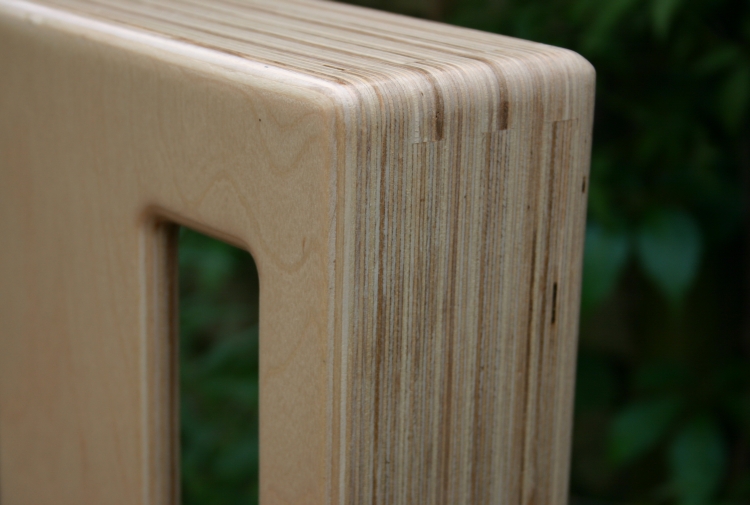
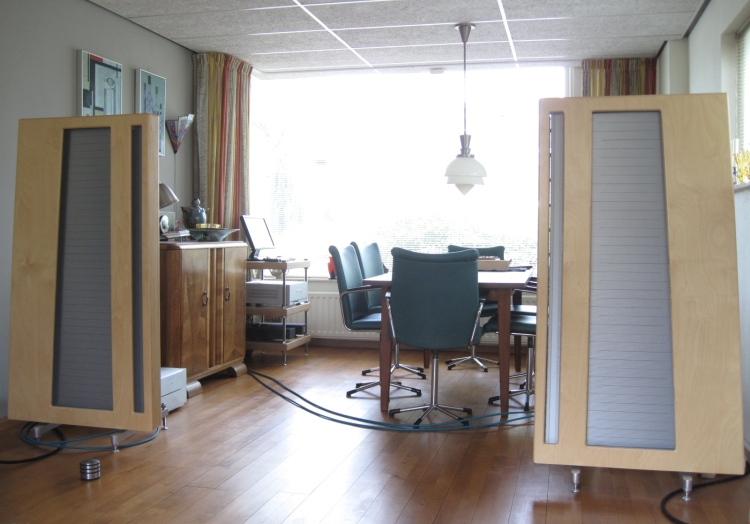
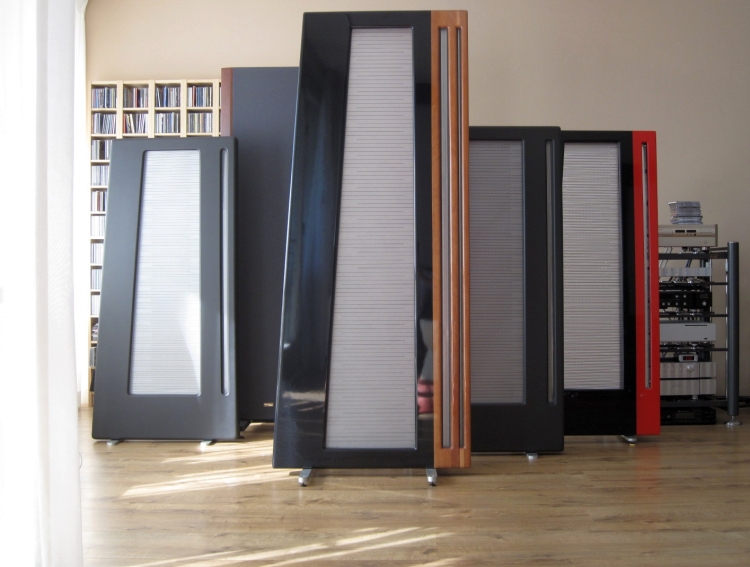
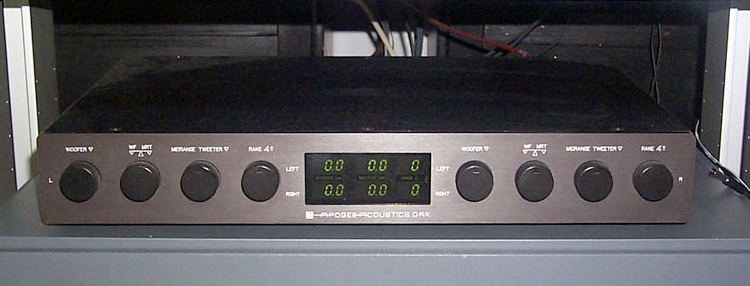
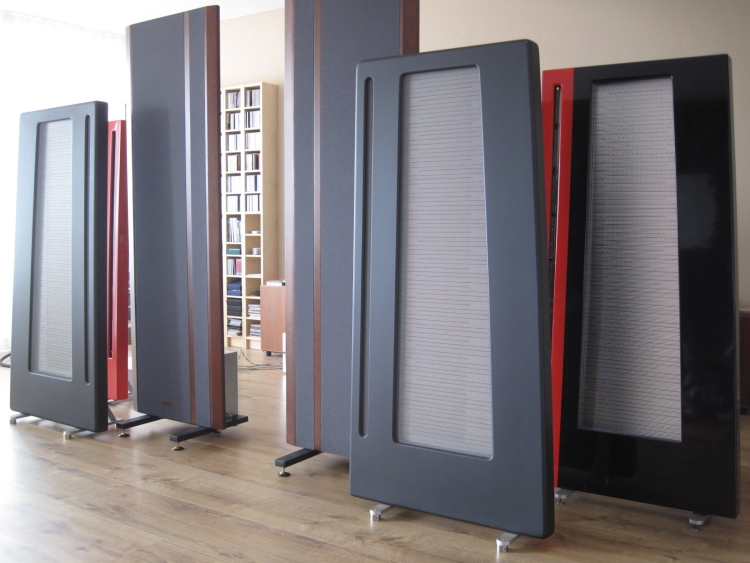
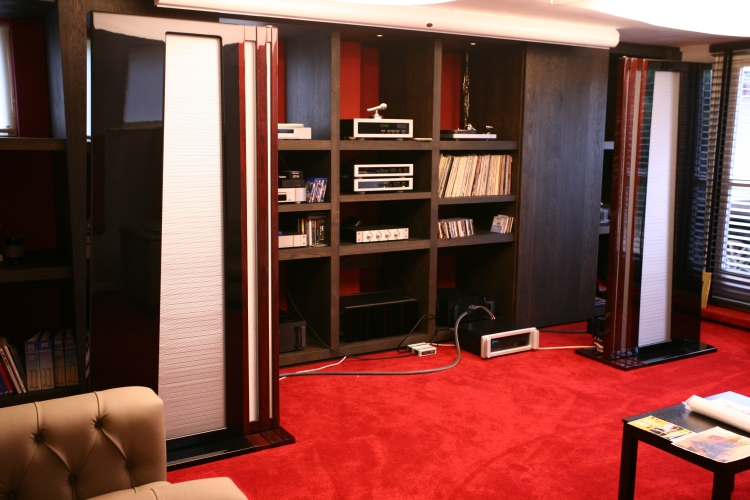
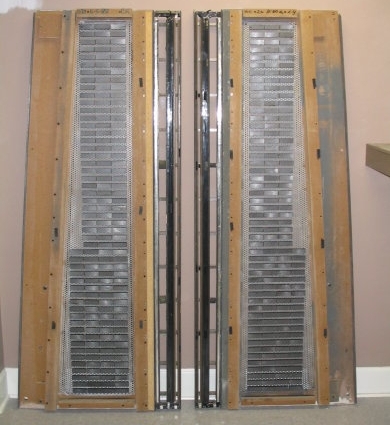
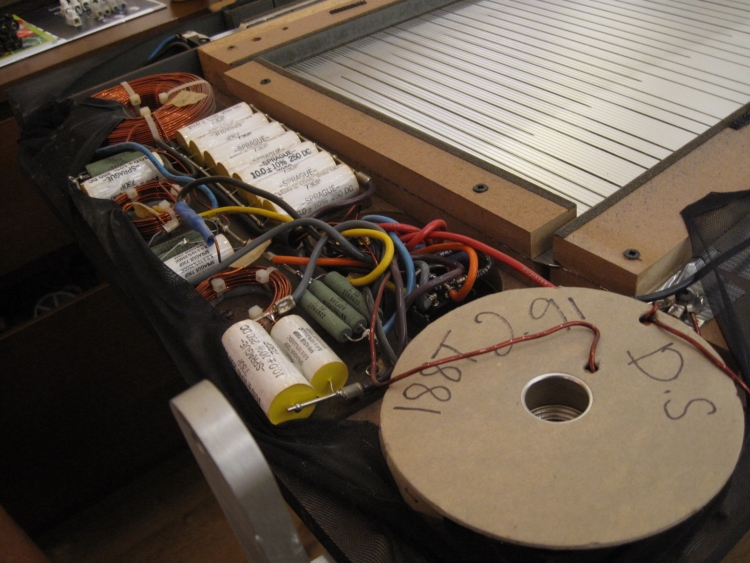
The Apogee DAX Manual advises that settings should be done by a dealer for the Calipers Signature but there are no dealers with the know how anymore! I could buy a used DAX3 from a Company repairing Apogees but they also don’t have the settings of DAX3 for the CALIPERS or resetting of the original passive cross-over for bi-amped signals. Could U help please?
Hi Robin, alas, I don’t have this documentation, either. But maybe Graz could help?
http://www.apogeeacoustics.com/index.html